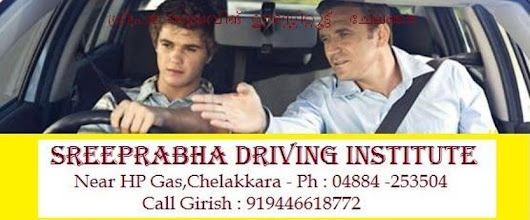Driving is an art and driving safely through the chaotic Indian roads requires more precaution than one can imagine. Get on to the street and the first thing you see is how cars and other vehicles overtake each other from left and right sides. It makes you feel that you are driving through a maze.
Hence, safety becomes the first priority when you get behind the wheels of a car. Everyone agrees that we do not have the sophisticated driving training programmes like in western countries. But we need to understand that their needs are different from ours. While we are required to deal with vehicles coming from both sides and sometime four sides, they have more structured driving lanes.
Things to learn at the driving school:
Traffic guidelines
Signals
Car driving dynamics
About situations where you need to take quick decisions.
A car driving school will teach you all of the above in real-life conditions. The Advantages of this kind of training are:
It will teach you the basic factor - handling a car. While you place your one hand on the steering wheel and juggle your legs on the clutch, brakes and accelerator pedals. It is important to know which pedal to use and which gear to apply while driving. Driving schools instructors guide you on driving techniques. They also explain how to drive under pressure. They give practical training and educate learners to avoid potentially dangerous situations. The instructors help the learners to overcome driving fear.
They teach the learners about the precaution to take before going for drive. Like - fastening your seat belt and checking petrol or oil level in tank. The training explains about different parts of a car and functions of various components. They also teach how to handle situations like overheating, lack of coolant, a car breakdown and other related aspects.
Another advantage of a car driving school is that they conduct training in their own cars. Since these are fitted with two clutch and brake pedal (one on instructor side and another near the driver), they are safer to drive. The instructor is well equipped to assist if the need arises.
These driving schools charge affordable fees for training. The only disadvantage is that they have a fixed duration to teach and cannot give individual attention. However, it is advisable that you should not venture into the road with a car without the prior permission from the instructor. Most of driving training institutes does not have any structured training module. In India, Sreeprabha Driving School is the only institute which meets international standards of training module for car driving. Before you enroll yourself into a driving training school, it is better to make inquires about the reputation of the school. Ensure you get the best school, this will make driving easier, and you will not have to encounter any surprises later.
Hence, safety becomes the first priority when you get behind the wheels of a car. Everyone agrees that we do not have the sophisticated driving training programmes like in western countries. But we need to understand that their needs are different from ours. While we are required to deal with vehicles coming from both sides and sometime four sides, they have more structured driving lanes.
Things to learn at the driving school:
Traffic guidelines
Signals
Car driving dynamics
About situations where you need to take quick decisions.
A car driving school will teach you all of the above in real-life conditions. The Advantages of this kind of training are:
It will teach you the basic factor - handling a car. While you place your one hand on the steering wheel and juggle your legs on the clutch, brakes and accelerator pedals. It is important to know which pedal to use and which gear to apply while driving. Driving schools instructors guide you on driving techniques. They also explain how to drive under pressure. They give practical training and educate learners to avoid potentially dangerous situations. The instructors help the learners to overcome driving fear.
They teach the learners about the precaution to take before going for drive. Like - fastening your seat belt and checking petrol or oil level in tank. The training explains about different parts of a car and functions of various components. They also teach how to handle situations like overheating, lack of coolant, a car breakdown and other related aspects.
Another advantage of a car driving school is that they conduct training in their own cars. Since these are fitted with two clutch and brake pedal (one on instructor side and another near the driver), they are safer to drive. The instructor is well equipped to assist if the need arises.
These driving schools charge affordable fees for training. The only disadvantage is that they have a fixed duration to teach and cannot give individual attention. However, it is advisable that you should not venture into the road with a car without the prior permission from the instructor. Most of driving training institutes does not have any structured training module. In India, Sreeprabha Driving School is the only institute which meets international standards of training module for car driving. Before you enroll yourself into a driving training school, it is better to make inquires about the reputation of the school. Ensure you get the best school, this will make driving easier, and you will not have to encounter any surprises later.






